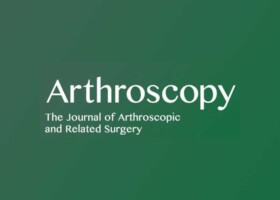
Authors:
Eoghan T. Hurley, MD, PHD, Zachary S. Aman, MD, Tom R. Doyle, MB, MCh, Jay M. Levin, MD, MBA, Laith M. Jazrawi, MD, Grant E. Garrigues, MD, Surena Namdari, MD, Jason E. Hsu, MD, Christopher S. Klifto, MD, Oke A. Anakwenze, MD, MBA, Jonathan F. Dickens, MD
Abstract:
PURPOSE
The purpose of this study was to establish consensus statements on glenoid bone-grafting, glenoid osteotomy, rehabilitation, return to play, and follow-up for posterior shoulder instability.
METHODS
A consensus process on the treatment of posterior shoulder instability was conducted, with 71 shoulder/sports surgeons from 12 countries participating based on their level of expertise in the field. Experts were assigned to one of 6 working groups defined by specific subtopics within posterior shoulder instability. Consensus was defined as achieving 80-89% agreement, whereas strong consensus was defined as 90-99% agreement, and unanimous consensus was indicated by 100% agreement with a proposed statement.
RESULTS
All of the statements relating to rehabilitation, return to play, and follow-up achieved consensus. There was unanimous consensus that the following criteria should be considered: restoration of strength, range of motion, proprioception, and sport-specific skills, with a lack of symptoms. There is no minimum time point required to return to play. Collision athletes and military athletes may take longer to return because of their higher risk for recurrent instability, and more caution should be exercised in clearing them to return to play, with elite athletes potentially having different considerations in returning to play. The relative indications for revision surgery are symptomatic apprehension, multiple recurrent instability episodes, further intra-articular pathologies, hardware failure, and pain.
CONCLUSION
The study group achieved strong or unanimous consensus on 59% of statements. Unanimous consensus was reached regarding the criteria for return to play, collision/elite athletes having different considerations in return to play, indications for revision surgery, and imaging only required as routine for those with glenoid bone-grafting/osteotomies at subsequent follow-ups. There was no consensus on optimal fixation method for a glenoid bone-block, the relative indications for glenoid osteotomy, whether fluoroscopy is required or if the labrum should be concomitantly repaired.
For the complete study: Posterior Shoulder Instability Part II – Glenoid Bone-Grafting, Glenoid Osteotomy, and Rehabilitation/Return to Play – An International Expert Delphi Consensus Statement
